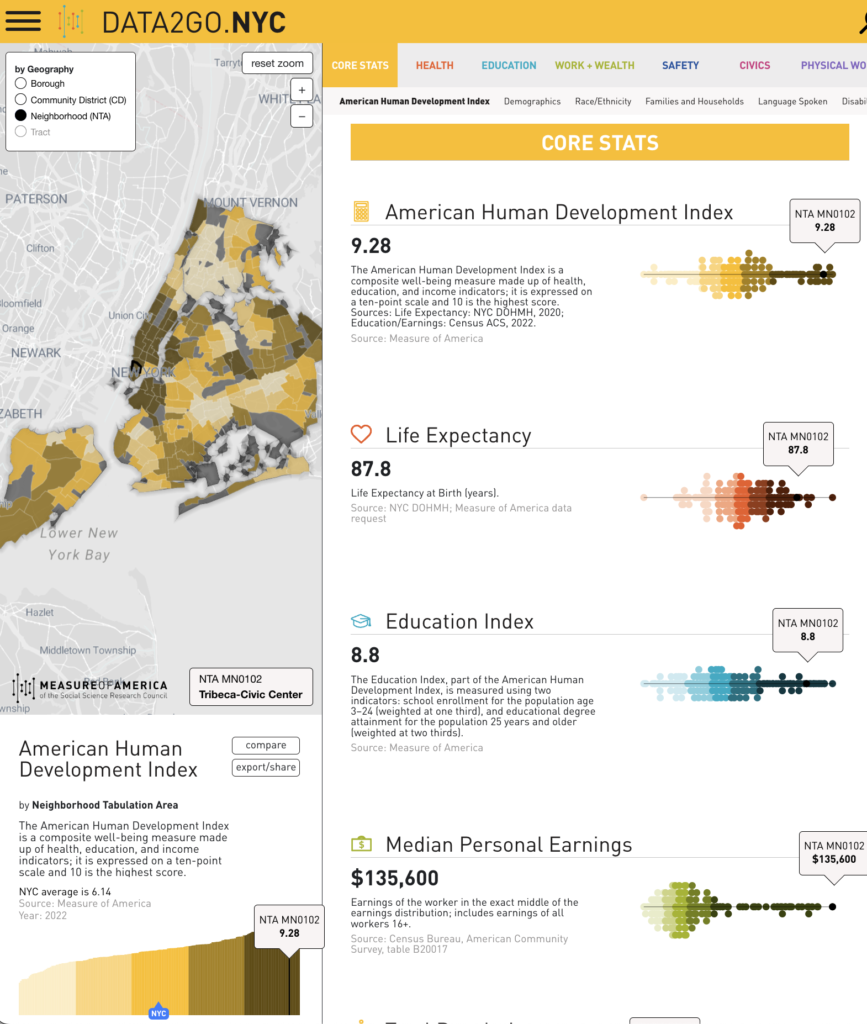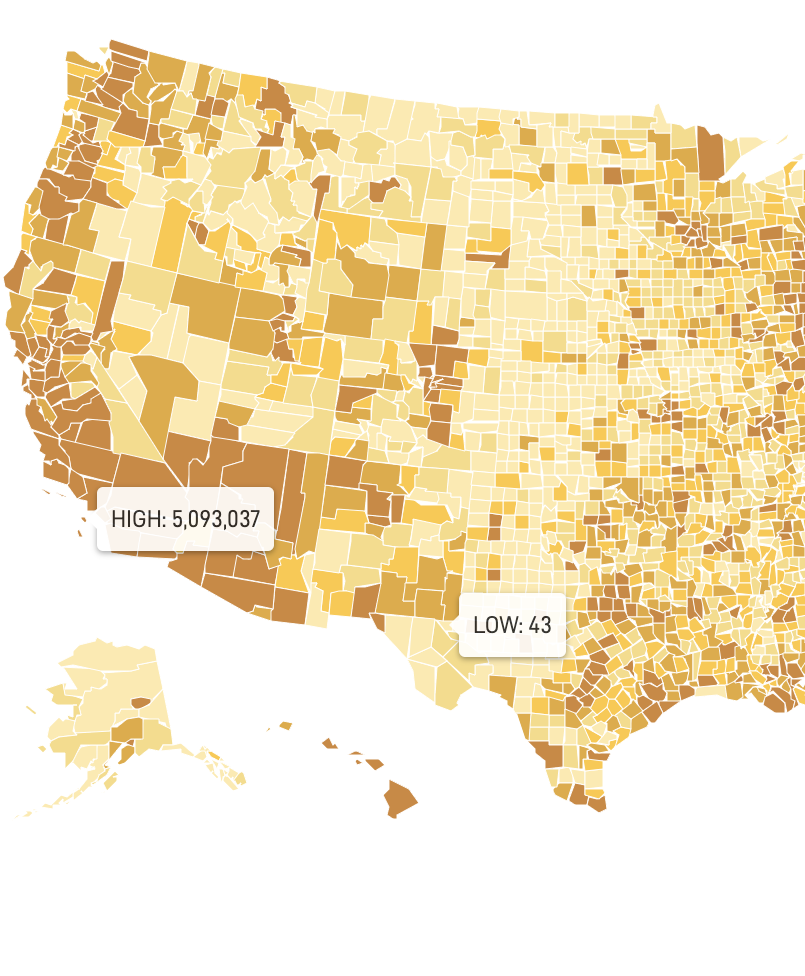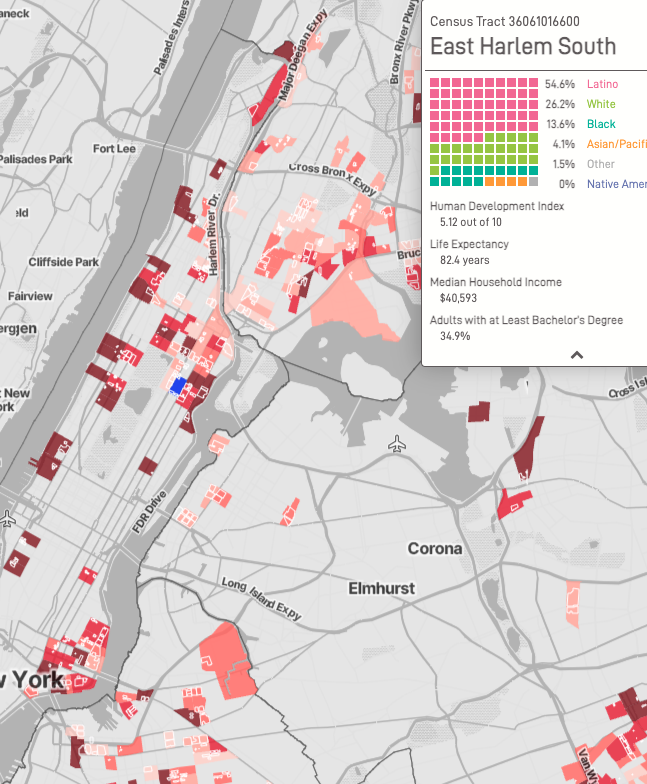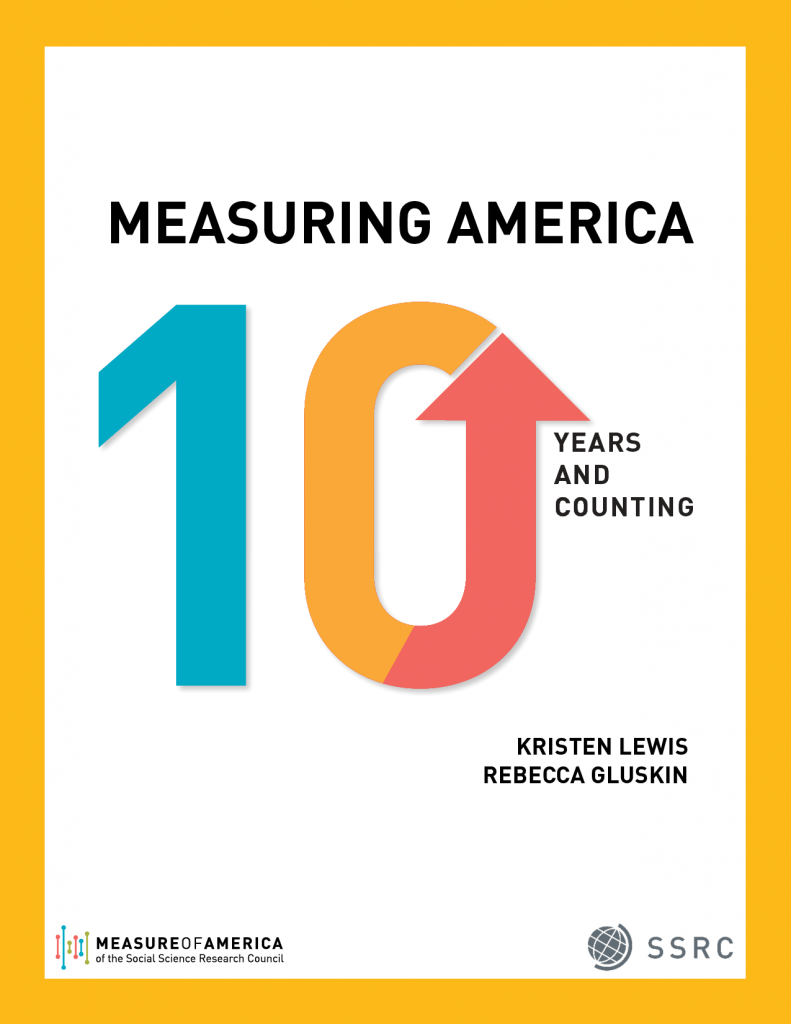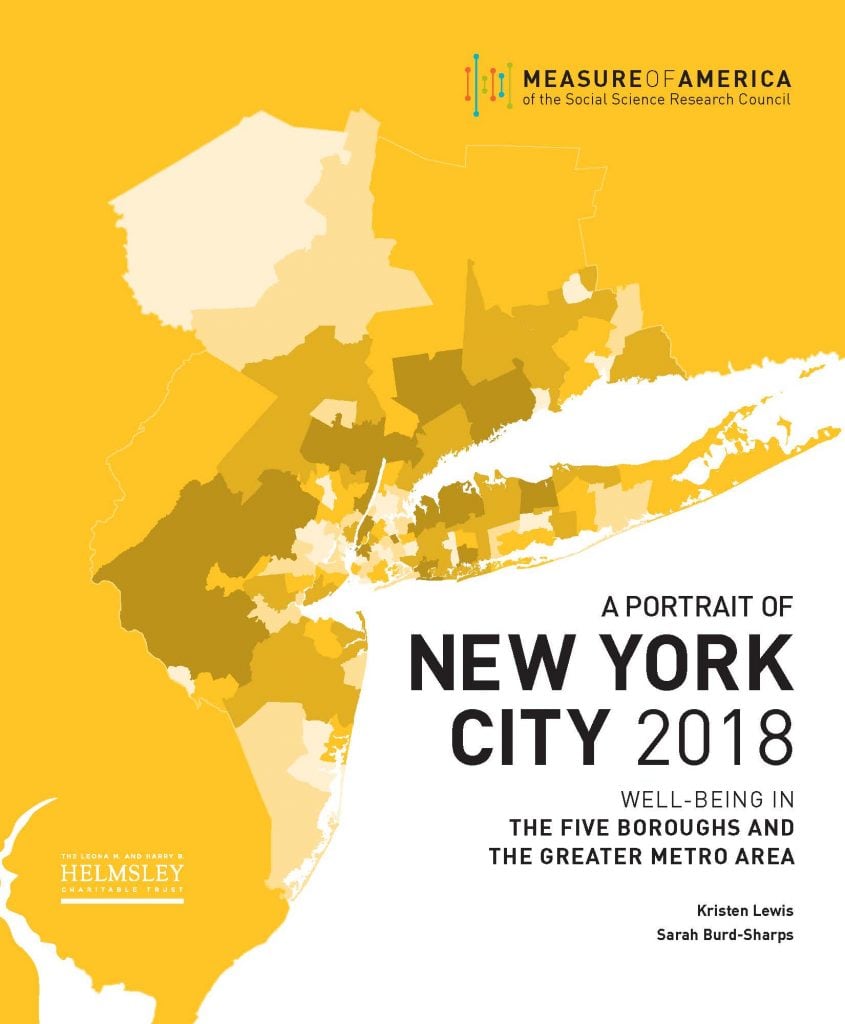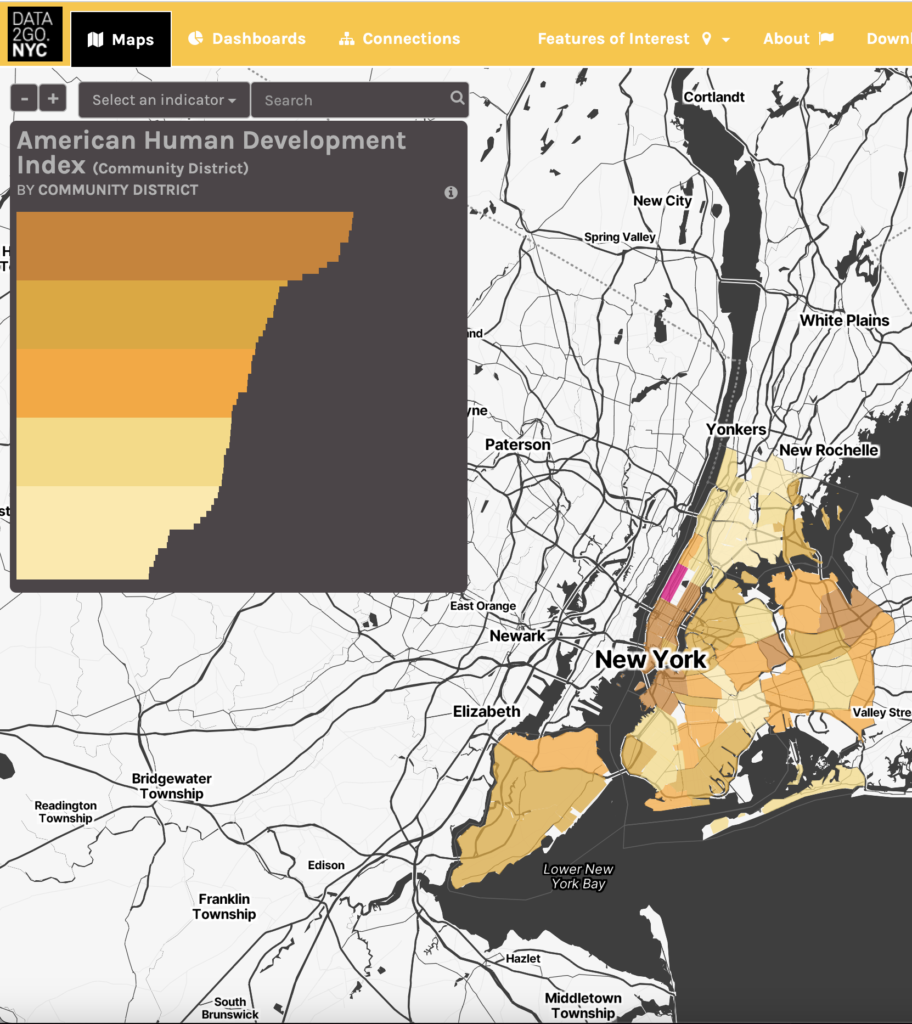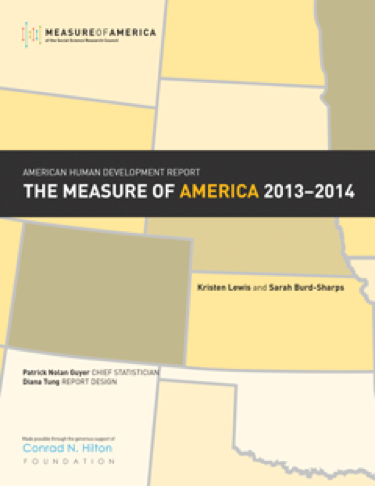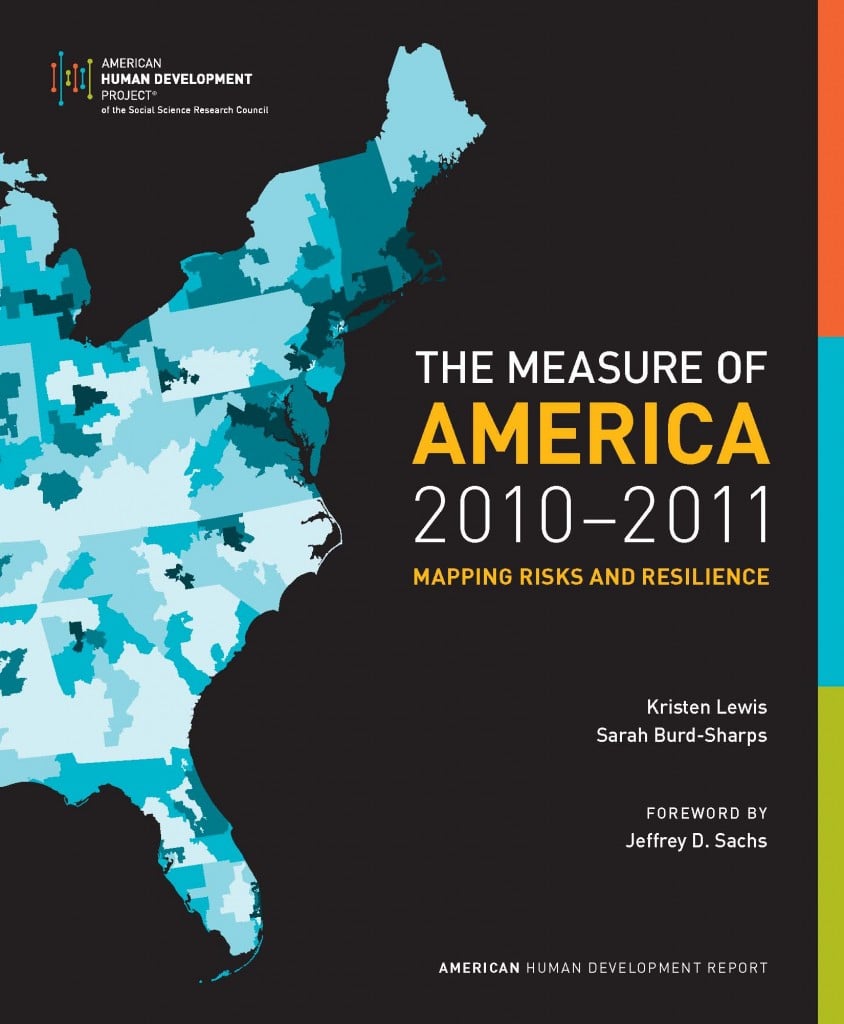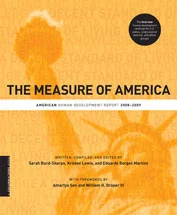Our Work
DATA2GO.NYC
Data Tool | April 30, 2025DATA2GO.NYC is a free, interactive tool that lets you explore over 400 indicators related to human well-being and inequality across New York City's nearly 200 neighborhoods.
Mapping America Tool
Data Tool | June 17, 2021With over 100 indicators, Mapping America allows users to explore data like they never have before. Users can plug in their zip codes to locate human development levels within their own communities, compare places and indicators, and more.
Strengthening the Data Capacity of NYC Nonprofits
Short Read | July 27, 2020Measure of America launched Learning What Works (LWW), a free technical assistance program designed to increase nonprofit leaders’ capacity to use data.
OurHome.NYC
Data Tool | February 12, 2020OurHome.NYC is a free, easy-to-use online mapping and data tool that depicts the relationship between health, as measured by life expectancy, and housing across more than 300 New York City Housing Authority (NYCHA) developments.
Measuring America: 10 Years and Counting
Report | December 14, 2018“Measuring America: 10 Years and Counting” explores trends in American Human Development Index scores over the past decade by race and ethnicity, gender, and U.S. state, revealing the uneven nature of America’s rebound from the 2007 financial crisis.
A Portrait of New York City 2018
Report | June 21, 2018A Portrait of New York City 2018: Well-Being in the Five Boroughs and the Greater Metro Area examines well-being and access to opportunity for different geographies and demographic groups in New York City and the greater New York–New Jersey–Connecticut metropolitan area using the human development framework and index.
Measure of America at the Smithsonian
Short Read | September 30, 2017Measure of America work was featured in the Cooper Hewitt, Smithsonian Design Museum's third exhibition in a series about socially responsible design, "By the People: Designing a Better America."
Geographies of Opportunity
Report | April 22, 2015Geographies of Opportunity: Ranking Well-Being by Congressional District is an in-depth look at how residents of America's 436 congressional districts are faring in three fundamental areas of life: health, access to knowledge, and living standards.
DATA2GO.NYC
Data Tool | October 28, 2015Data2Go.NYC allows users to visualize where people in need are, what resources are available to assist them, where gaps exist, and how different factors interact to shape the choices and opportunities available to them.
The Measure of America 2013–2014
Report | June 19, 2013This third volume in the Measure of America series measures well-being in three vital areas—health, education, and earnings—that shape the opportunities available to us and enable people to invest in their families and live to their full potential.
State of the Congress 2013
Short Read | January 28, 2013The 113th Congress is the most diverse group of representatives in history. Yet its members are still significantly more likely to be male, white, and over 65 than other Americans. And in terms of basic well-being and access to opportunity, members of Congress are far ahead of the average in earnings and education but lag in life expectancy.
The Measure of America 2010-2011: Mapping Risks and Resilience
Report | November 10, 2010The book contains American Human Development Index ranking for all 50 states, 435 congressional districts, major metropolitan areas, racial and ethnic groups, as well as men and women.
A Century Apart: New Measures of Well-being for U.S. Racial and Ethnic Groups
Report | April 27, 2010An entire century of human progress separates the worst-off from the best-off groups within the U.S., according to the latest update of the American Human Development (HD) Index.
The Well-O-Meter™
Data Tool | 2008You have seen where your state and congressional district stack up in the American HD Index rankings, but what about you? Get a general sense of your own human development level by using The Well-O-Meter™.
The Measure of America 2008–2009
Report | July 2008The Measure of America is the first-ever human development report for a wealthy, developed nation. It introduces the American Human Development Index, which provides a single measure of well-being for all Americans, disaggregated by state and congressional district, as well as by gender, race, and ethnicity.
